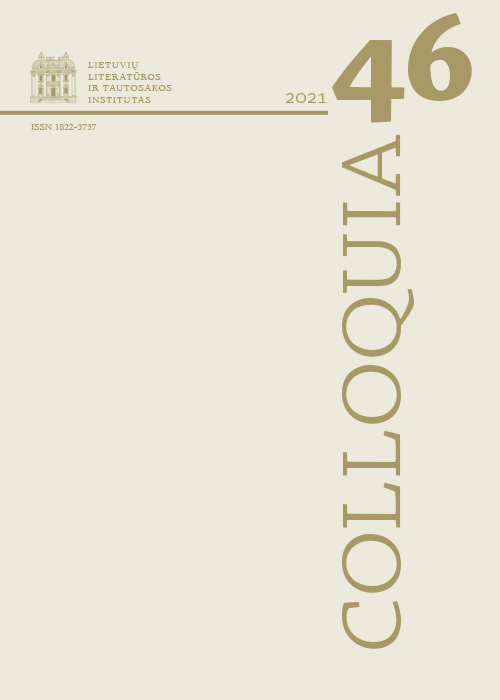The Autobiographical Pact as an Architectural Palimpsest: Judita Vaičiūnaitė’s Mabre viešbutis
Abstract
The article reconsiders the idea of Philippe Lejeune’s autobiographical pact. In both Lithuanian and Western theoretical discourses, Lejeune’s ideas are usually combined with narrative and linguistic insights that reveal the position of a narrator. In this article, the concept of the autobiographical pact is revised using the concepts of Gérard Genette’s types of transtextuality (hypertext, hypotext, and paratext) and certain aspects of Lars Elleström’s model of intermedial relations. Genette’s and Elleström’s ideas highlight the intertextuality and intermediality of the autobiographical pact.
These theoretical considerations are tested in the analysis of Judita Vaičiūnatė’s memoir prose collection, Mabre viešbutis [Mabre Residence Hotel]. The collection was published after the author’s death, so the book is noteworthy not for its content (most of the texts were already published before) as for its new form—a paratext prepared by the “author” of the book, the poet’s daughter, Ula Vaičiūnaitė. The collection, Mabre Residence Hotel, unfolds not only as a testimony to Judita Vaičiūnaitė’s memory but also as a document of Ula Vaičiūnaitė’s reading experience and effort to remember, which in turn becomes an invitation to recollect. The figure of the author’s name, which is essential for the autobiographical pact, appears as an interactive “monument” that becomes relevant during the reading process.
The focus on intertextuality and intermediality of the text (reading) enables to see not only the spatial palimpsest of the autobiographical text but of the autobiographical pact itself. In the context of intertextuality and intermediality, the autobiographical pact reveals itself as a distinctive architecture of literary space.
